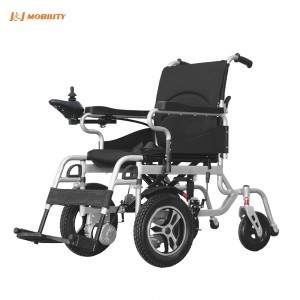Stability of Electric Wheelchairs: Key Factors and Technical Assurance
The stability of electric wheelchairs is a core element affecting user safety and comfort, especially when navigating slopes, turning, or crossing obstacles. Modern electric wheelchairs continually optimize design and technology to ensure users maintain balance and prevent accidental tipping in various environments. This article explores the stability of electric wheelchairs and its technical assurances from the perspectives of structural design, power distribution, and intelligent control.
1. Key Factors of Electric Wheelchair Stability
Center of Gravity and Structural Design
Low Center of Gravity: Lowering the center of gravity is a fundamental method to enhance stability. A low center of gravity design effectively prevents tipping, particularly important during ascents, descents, or sharp turns.
Wide Wheelbase Layout: Increasing the wheelbase enhances lateral stability and reduces the risk of tipping when the wheelchair is tilted sideways.
Tires and Suspension System: Using non-slip, shock-absorbing tires and a multi-stage suspension system helps mitigate bumps and improve stability on uneven surfaces.
Power and Braking Systems
Dual Motor Drive: A dual motor drive system better balances power output between the left and right wheels, ensuring stability across different terrains.
Automatic Braking System: A slope assist brake function can automatically slow down or brake on steep grades, preventing loss of control.
Anti-Tipping Devices
Many electric wheelchairs are equipped with anti-tipping small wheels at the front or rear, providing support to prevent tipping when the wheelchair tilts forward or backward.
2. Intelligent Stability Control Technologies
With the advancement of technology, more electric wheelchairs are incorporating intelligent control systems to further enhance stability.
Intelligent Posture Sensing System
By utilizing built-in gyroscopes and accelerometers, the wheelchair can monitor the user’s sitting posture and changes in terrain in real-time, automatically adjusting the seat angle or center of gravity.
Automatic Slope Adjustment Technology
Some high-end electric wheelchairs feature adaptive slope functionality, which automatically adjusts power output based on the gradient, ensuring the wheelchair does not tip backward when going uphill or forward when going downhill.
Terrain Recognition and Dynamic Adjustment
Intelligent wheelchairs can use cameras or LiDAR to recognize road conditions, dynamically adjusting drive power and suspension systems to maintain stability even on complex terrains.
3. Market Trends and Future Prospects for Stability Enhancement
Modular Design
Future electric wheelchairs may adopt a modular design, allowing users to replace tires, suspension components, or add anti-tipping devices based on individual needs to enhance stability.
AI-Assisted Systems
The integration of AI technology will enable smarter stability control, analyzing road conditions and user needs in real-time to make optimal adjustments automatically.
All-Terrain Adaptation Technology
For outdoor use scenarios, the development of all-terrain adaptation technology for electric wheelchairs will become a new focus, ensuring users can safely travel across grass, sand, or snow.
Conclusion
The stability of electric wheelchairs is crucial not only for user safety but also for their freedom of movement in various situations. With ongoing advancements in intelligent and user-friendly designs, future electric wheelchairs will possess greater stability and adaptability, providing users with a more secure and convenient travel experience. Breakthroughs in this field will significantly enhance the quality of life for many individuals with mobility challenges.
Post time: Nov-28-2024


